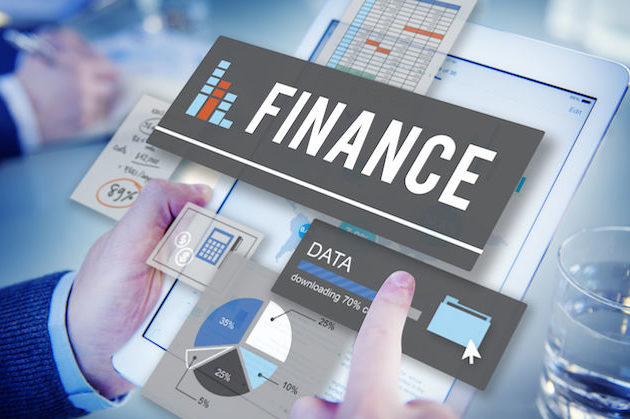In the world of trading, momentum is more than just a market buzzword — it’s the pulse that drives price action, dictates trends, and shapes opportunities. For traders in Contracts for Difference (CFDs), mastering short-term momentum can be the key to consistent profitability. Unlike long-term investing, where patience and macroeconomic factors rule, short-term CFD trading thrives on precision, speed, and the ability to interpret price movements as they unfold.
In today’s fast-paced markets, technology and data have empowered traders with more tools than ever before to capture quick moves and capitalise on volatility. However, with this opportunity comes the need for skilful analysis, emotional control, and strategic timing. Understanding how to identify and leverage short-term momentum is what separates seasoned CFD traders from those merely reacting to price swings.
Understanding Momentum in CFD Trading
Momentum, in its simplest form, refers to the rate of change in an asset’s price. When prices move strongly in one direction over a short period, it signals high market momentum. For CFD traders, this movement is a potential opportunity to ride the wave — entering trades early in the trend and exiting before it fades.
Momentum is often driven by a combination of market psychology, liquidity, and news catalysts. Positive economic data, earnings reports, or geopolitical developments can spark bursts of buying or selling that ripple through markets. Unlike traditional investors, CFD traders can profit from both upward and downward moves by taking long or short positions.
The key lies in distinguishing genuine momentum from short-lived volatility. Many traders fall into the trap of chasing every price spike, only to get caught in a reversal. True momentum trading requires confirming that a price movement is backed by volume, trend strength, and market sentiment.
The Role of Technical Analysis in Spotting Momentum
Technical analysis is the cornerstone of momentum-based CFD strategies. Indicators such as the Relative Strength Index (RSI), Moving Average Convergence Divergence (MACD), and stochastic oscillators help traders quantify the strength and direction of momentum.
For instance, an RSI reading above 70 might indicate an overbought condition, suggesting that bullish momentum could soon cool off. Conversely, a reading below 30 could hint at oversold conditions and the potential for a rebound. Meanwhile, moving averages — particularly short-term ones like the 10-day or 20-day — are useful for identifying trend direction and entry points.
Price action analysis adds another layer of insight. Candlestick patterns, support and resistance zones, and breakout levels can help confirm whether momentum is sustainable or likely to reverse. In fast-moving CFD markets, traders often combine multiple indicators and chart patterns to create a comprehensive view of price dynamics before entering a trade.
Strategies for Capitalising on Short-Term Price Action
Momentum trading in CFDs involves more than spotting signals — it’s about timing entries and managing risk effectively. One common strategy is the breakout trade, where a trader enters when the price moves above resistance or below support with strong volume. Breakouts often signal the start of a new trend, but they require careful confirmation to avoid false signals.
Another effective method is the pullback strategy. Here, traders wait for a temporary retracement in a strong trend before entering in the direction of the prevailing momentum. This approach allows for better risk-reward ratios and minimises the chances of entering during market exhaustion.
Scalping is another momentum-driven technique, particularly popular among CFD traders who thrive on quick decisions. Scalpers take advantage of tiny price changes, sometimes holding positions for only seconds or minutes. While the profits per trade may be small, the frequency of trades can lead to substantial cumulative gains — provided transaction costs and slippage are kept in check.
The Importance of Choosing the Right Trading Platform
Momentum trading requires real-time data, fast execution, and analytical precision. Having a reliable broker and platform can make the difference between seizing an opportunity and missing it by seconds. For traders in the Middle East and beyond, selecting a reputable Arabic forex broker can provide the tools and infrastructure needed to thrive in CFD markets.
The ideal broker offers tight spreads, advanced charting tools, and access to a wide range of instruments — from forex and commodities to indices and stocks. Equally important are features like negative balance protection, transparent pricing, and strong regulatory oversight. A well-supported trading environment allows traders to focus on strategy and performance rather than worrying about platform reliability or execution delays.
Conclusion: Mastering Momentum for Consistent Success
Momentum mastery in CFD markets is not about predicting the future — it’s about understanding how traders collectively react to price movements and learning to position yourself accordingly. Staying informed about Trading regulations in MENA is essential, as regional frameworks ensure fair practices, investor protection, and compliance for those operating within these rapidly growing markets. By combining technical insight, disciplined execution, and a trusted trading platform, short-term traders can harness the rhythm of the market to their advantage.
The beauty of momentum trading lies in its immediacy — the chance to translate real-time insights into actionable opportunities. Whether you’re capturing a quick breakout or following a multi-day trend, the principles remain the same: observe, confirm, and act decisively.



